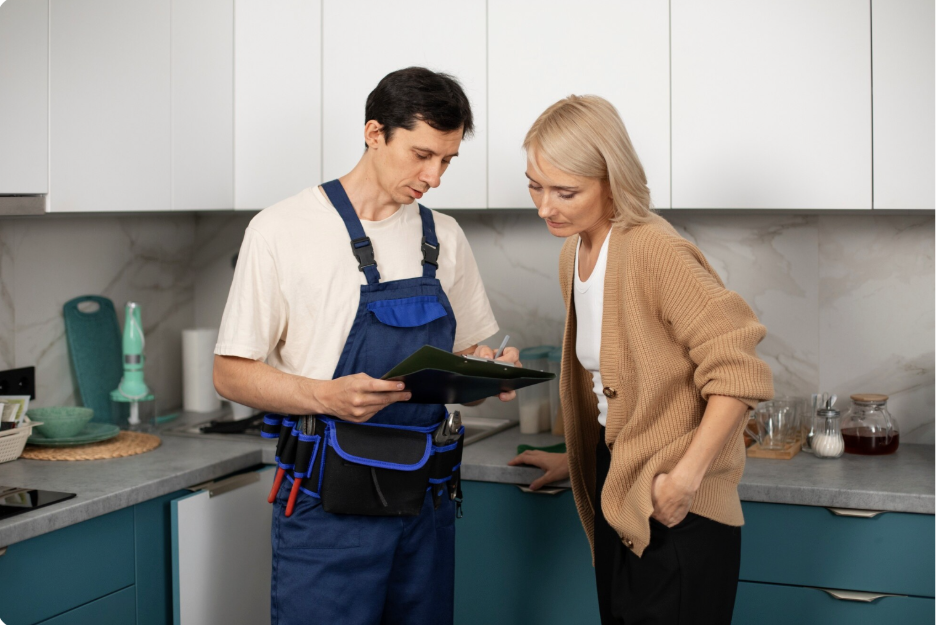

You may not realize it, but from morning to night, machines pretty much run our homes.
Between cooking, washing, cooling, and heating, an average household runs through 20 to 30 appliance cycles a day without even thinking about it.
At some point, we all want to upgrade, the old fridge that hums too loud, the washer that vibrates like it’s about to quit.
And the best time to replace it? The holiday season, of course.
Adobe projects that over half (53.7%) of all online spend during Cyber Week will come from just a few categories, electronics ($57.5 billion, up 4% YoY), and home-related upgrades as shoppers use deals to improve their spaces.
And within those, the biggest surges are in refrigerators and freezers (up 910%), and smart home devices (up 615%).
So yes, people will be buying, but risk comes wrapped in those same boxes, for shoppers and retailers alike.
Ever had a package stolen off your doorstep? Or that call from a customer saying, “Hey, I didn’t receive it”? It happens more often than we think. And it’s worse during the holidays.
Thefts jumped 48% in December 2023 and another 40% during Prime Day 2024, right when deliveries were flooding every neighborhood.
And even when the package makes it home, the story doesn’t end there. Appliance repairs aren’t cheap anymore. A fridge repair now averages $350–$500, washers hover around $400, and a failed compressor can cross $1,000. That’s roughly 30–40% of what a new one costs.
And, just between you and me- with tariffs, the cost might spike even higher during the holidays.
Yeah, there is, and a lot of people are already benefiting from it.
Warranties might not look like much at checkout, but they’re the quiet win of the season. A small upfront cost can save hundreds down the line and keep things predictable when everything else isn’t.
And for retailers, warranties create an extra revenue stream and a smart hustle during a season where margins are already tight and competition is unyielding.
Not every appliance fails for the same reason, and not every warranty shows up the same way. The right coverage depends on what usually goes wrong, whether it’s a factory fault, a power surge, or just years of daily wear.
Let's take a quick glance-

Every appliance, dryer, fridge, washing machine, or air conditioner leaves the factory with some backup. It’s the brand’s way of saying, “If something goes wrong early, we’ll fix it but only under certain conditions.”
That’s your manufacturer’s warranty, and every appliance has one. But it doesn’t look the same for all of them.
In most cases, a manufacturer’s warranty covers how the appliance was built, not how it’s used. It’s meant to protect against defects in materials or workmanship, like:
It’s protection against factory mistakes, not what happens after daily use kicks in.
The warranty ends where real life begins. It doesn’t cover:
So, if your coffee maker shorted after a spill, or your washer stopped mid-cycle because it was stuffed too full, then as per manufacturer’s warranty- that’s on you.
Also, in most cases- by the time your appliance actually starts showing its age, that warranty has usually expired.
That’s why extended warranties aren’t really an upsell anymore. They’ve become the continuation protection plan for your home appliances.
Once the factory’s promise expires, you’re pretty much on your own when it comes to repairs and damages. Extended warranties are built for that exact phase.
They’re not about defects or factory faults anymore; they’re about time, wear, and the small breakdowns that happen after years of use.
And the coverage goes far beyond the basics:
Because come on, nobody really plans for a $300 dryer repair with labor when the dryer itself costs around $600 to $700 and even less during Black Friday or Cyber Monday.

Even the most careful homes have their moments. Sometimes the washing machine lid slams harder than it should, and the glass actually cracks. Trust me, it happens (yeah, happened to yours truly).
Other times, it’s the air fryer teetering a little too close to the edge, or the coffee machine getting splashed right where it shouldn’t.
None of this is a “defect.” But when it does, the manufacturer’s and the extended warranty usually don't help.
Accidental protection plans designed for life’s unpredictable moments, the ones you can’t plan for but wish you had covered when they happen.
Here’s what they usually cover:
And honestly, it’s always better to be safe than sorry.
You know that feeling you’re tracking a package all day and it finally says “delivered,” but there’s nothing at the door?
Despite all the tech and efficiency, 92% of e-commerce merchants still say they lose money because of damaged, lost, or stolen shipments. That’s roughly 1.7 million packages disappearing every single day and to make it worse, 1 in 3 Americans has already experienced package theft firsthand.
Shipping protection covers everything that can go wrong between checkout and doorstep.
Every appliance is meant to make life easier. But for that to happen, it first needs to make it home safe.
Warranties aren’t just about fixing what breaks, they’re about taking the guesswork out of ownership.
For shoppers, it’s knowing that one bad day won’t suddenly turn into a $600 repair bill. For retailers, it’s about turning uncertainty into something predictable, stable revenue, smoother service, and happier customers who come back.
In the home appliance world, where prices keep climbing and expectations run high, that balance matters.
A premium appliance retailer in the Southwest learned that firsthand. They sold everything from outdoor grills to smart kitchen systems. But as products got smarter (and pricier), hesitation grew. Customers weren’t sure what would happen after the sale.
Repairs took too long. Tariffs made prices jump. And one bad experience with a broken coffee machine was enough to make anyone think twice.
So, they added protection plans to every high-ticket item. Within months, the results were impossible to ignore:
“Customers invest in their dream kitchens because they trust their equipment will work,” says Sarah M., founder and culinary enthusiast. “Protection plans helped rebuild that trust. They turned hesitation into confidence.”
Because in retail, especially with appliances that anchor daily life, reliability sells more than price ever could. Warranties just happen to make reliability profitable, too.
Good question! because even protection needs protection.
Most warranty providers have their own claims process, and customers still have legal backing under federal and state consumer laws.
Now, if you’re thinking, “Okay, fine, warranties make sense, but how do you choose the right one?” It really comes down to two words: trust and reliability.
So, when you’re picking one, look for the basics that actually matter:
At SureBright, we don’t think warranties should feel like an extra burden. You focus on selling; we’ll focus on keeping every purchase protected, for you and for your customers.
That’s why over 500+ brands and 1000+ customers trust us to keep protection effortless, reliable, and real.
Got a product worth protecting? We’ll make sure it stays that way. Say hello!